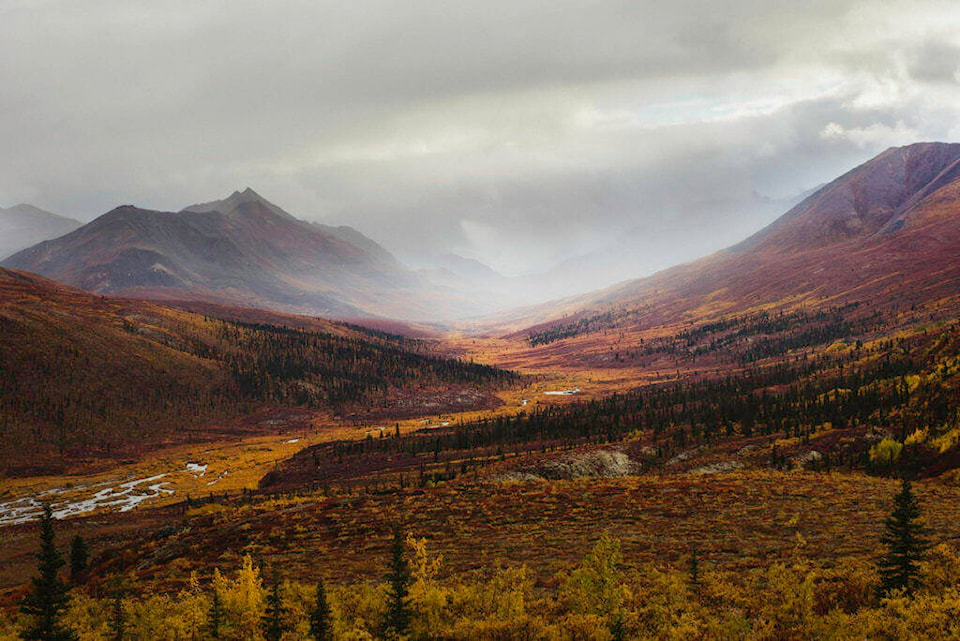A recently-announced agreement between the Yukon Government and the Government of Canada will increase the amount of the territory’s lands that are protected. Announced Dec. 14, the Canada-Yukon Nature Agreement sets a schedule for the Yukon’s contributions to the federal government’s land conservation goals.
The agreement was announced during COP15, a conference of the United Nations Convention on Biological Diversity, an international meeting held in Montreal earlier this month. The protection agreement for the Yukon is one many conservation goals agreed to at the conference.
In the agreement, the Yukon commits to identifying areas for protection of 25 per cent of Canada’s lands by 2025 and 30 per cent by 2030. A six per cent increase in the portion of Yukon lands that are protected is pledged. In the agreement the Yukon also commits to the speedy implementation of the Aullaviat/Aunguniarvik traditional conservation area agreement, which will protect more of the territory’s north slope and Arctic coast, if it is ratified by the interested groups.
The federal government is getting behind the added protected areas in the Yukon with funding.
“The Government of Canada will invest a total of $20.6 million to implement the agreement and help protect nature. This will support Indigenous leadership in conservation; increased protection of sensitive habitats; and recovery actions for species at risk, such as the northern mountain caribou, the grizzly bear, and vascular plants, as well as the protection and conservation of new land in the Yukon,” the Dec. 14 announcement reads.
A joint announcement from the Federal Government and the Yukon Government referred to the agreement as the first of its kind.
“The Yukon is one of those iconic landscapes that helps define what Canada is as a country, both in our collective imagination and in reality on the ground. The Government of Canada is taking bold action to protect the natural environment that is our best ally in the fight against climate change and biodiversity loss,” said Steven Guilbeault, Canada’s minister of environment and climate change.
“Together with the Government of Yukon, we’re protecting more sensitive habitats, supporting the recovery of species at risk, and restoring ecosystems across the Territory. Moving forward, the Canada–Yukon Nature Agreement will guide our actions, in partnership with Indigenous peoples, to conserve and protect nature in the Yukon.”
Nils Clarke, the Yukon’s environment minister added that the territory’s vast wilderness is the reason that many of its residents choose to call it home. He said climate change, human development and the loss of biodiversity all threaten the northern way of life.
The agreement lists areas in the Yukon that the governments plan to have included in the Canadian Protected and Conserved Areas Database (CPCAD). In the form of a new territorial park in the North Yukon, a new habitat protection area, land use planning in the Peel Watershed and the Dawson area as well as further areas amounting to between one and two per cent of the territory identified in partnership with First Nations. Another territorial park, two more protected areas and relinquished mining claims in the Peel Watershed are among the additions to the conserved areas planned by 2030.
The agreement notes that it is not legally binding to its participants.
The Yukon chapter of the Canadian Parks and Wilderness Society (CPAWS) has expressed satisfaction with the agreement but also thinks it shouldn’t stop the Yukon from working towards a lofty conservation goal all its own.
A Dec. 15 press release from CPAWS called the nature agreement “a critical step towards addressing biodiversity loss and climate change,” but only a first step.
“CPAWS Yukon is hopeful that the Government of Yukon will follow the agreement by implementing clear policies that support 30 per cent protection by 2030 and supporting Indigenous-led conservation,” CPAWS’ notice reads.
According to CPAWS 19.1 per cent of the Yukon and 13.5 per cent of Canada is currently protected land. According to polling commissioned by CPAWS and conducted by an outside agency 80 per cent of Yukoners support the federal government’s commitment to protecting 30 per cent of the country’s land. CPAWS’ polling data also suggests that 66 per cent of Yukoners would be more likely to support a territorial government if it set a big and important nature conservation goal, like protecting and conserving 30 per cent of land and water in the Yukon by 2030. Sixty-three per cent said they would be more likely to support a Yukon political party if it proposed to increase territorial funding to create new protected areas. Only 16 per cent said they would be less likely to support a party that made such a commitment.
Contact Jim Elliot at jim.elliot@yukon-news.com
